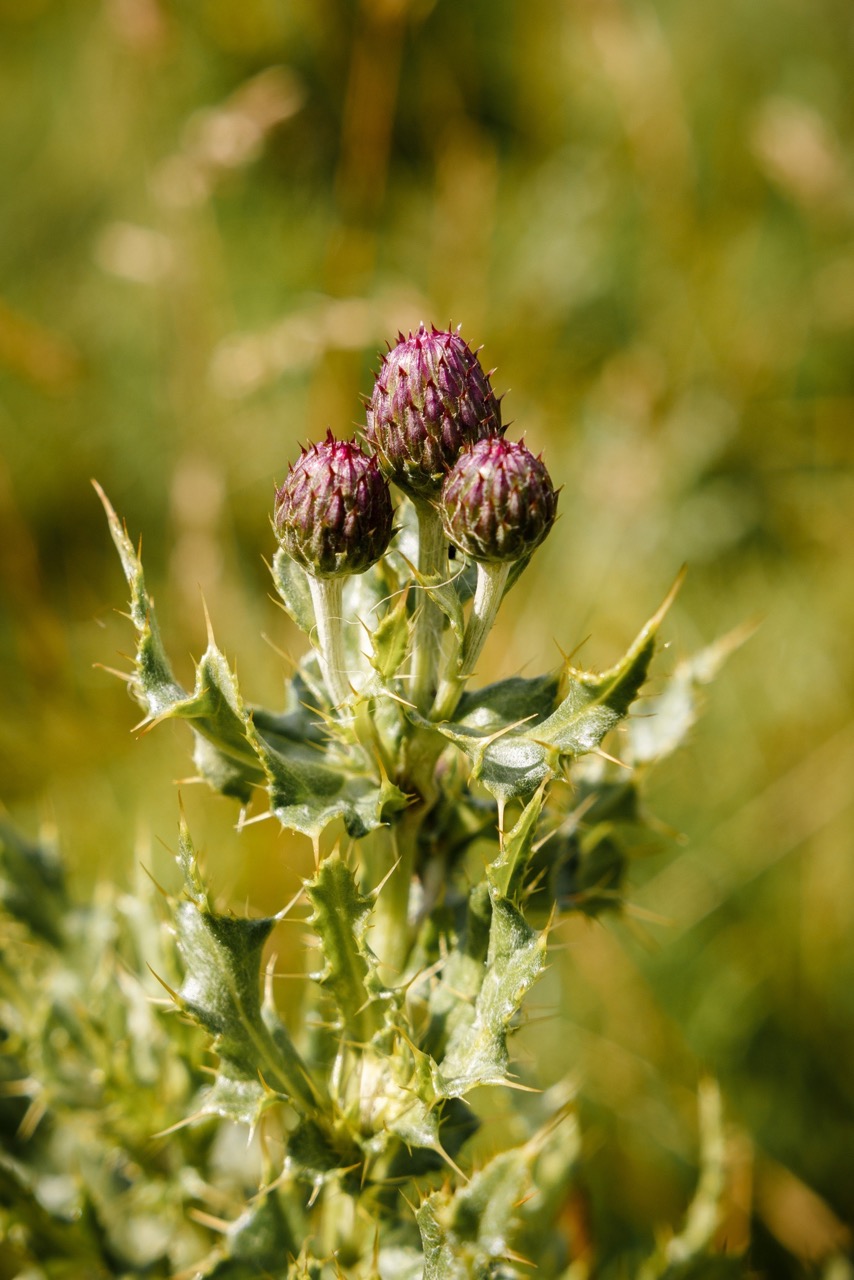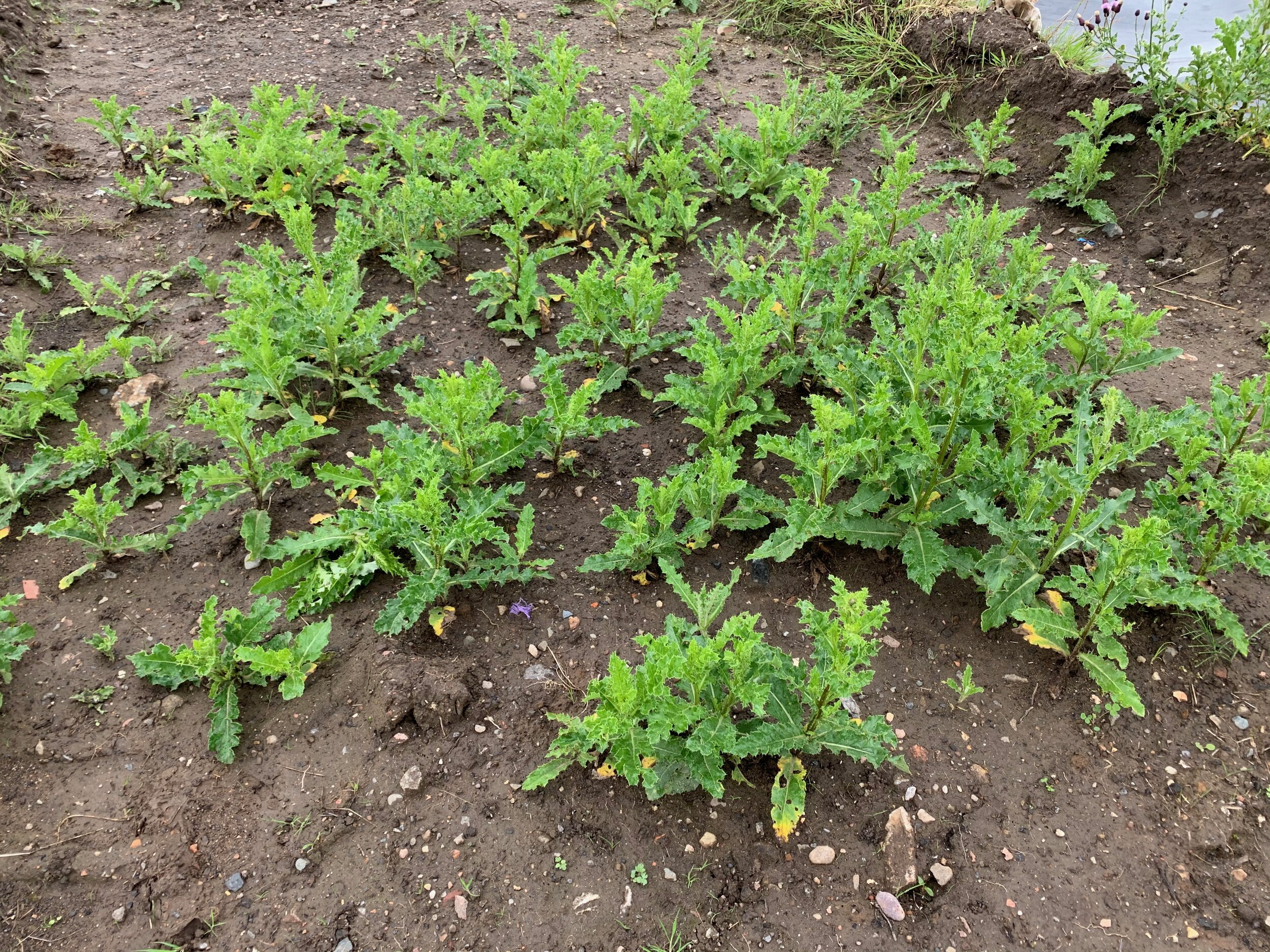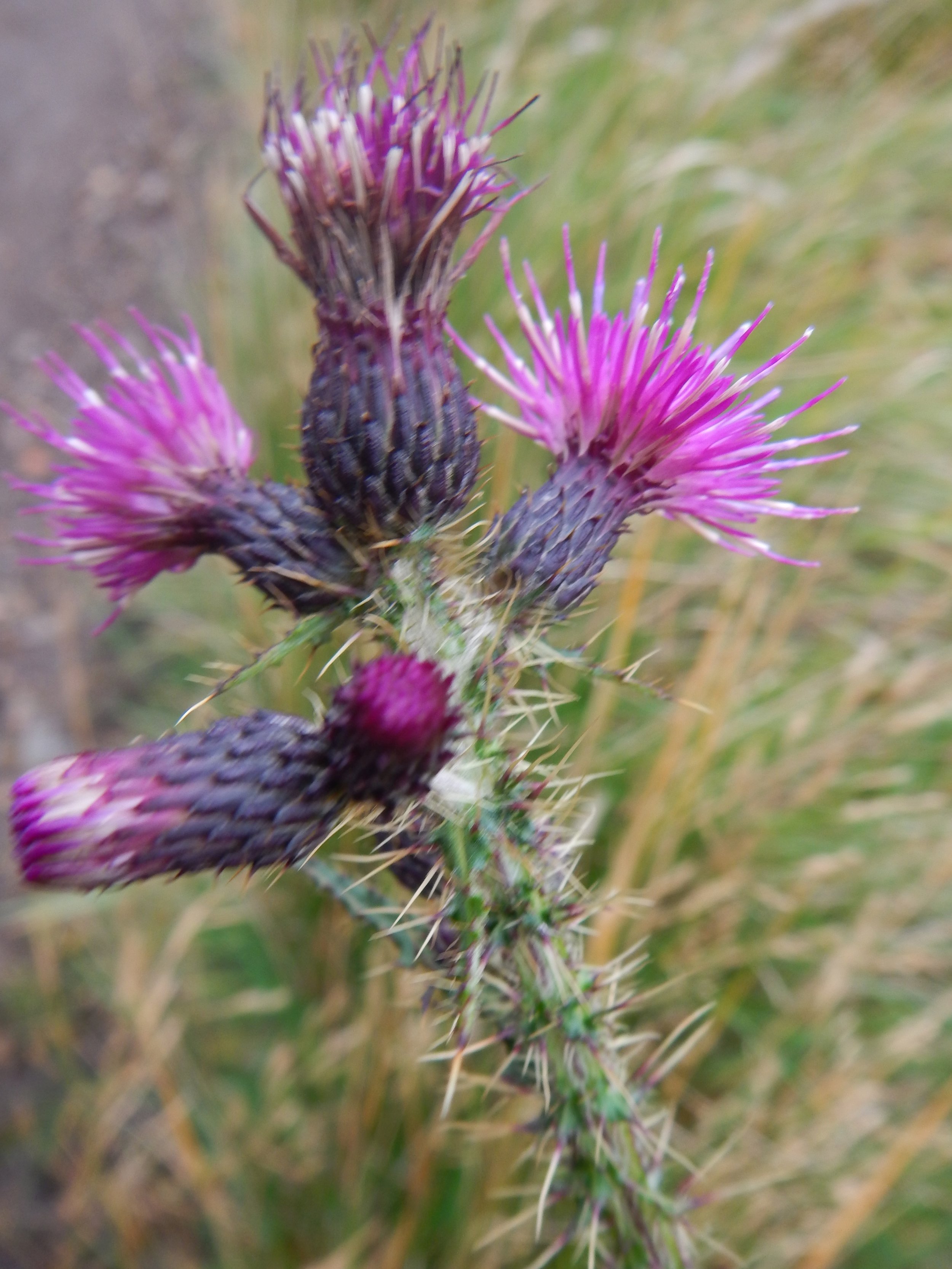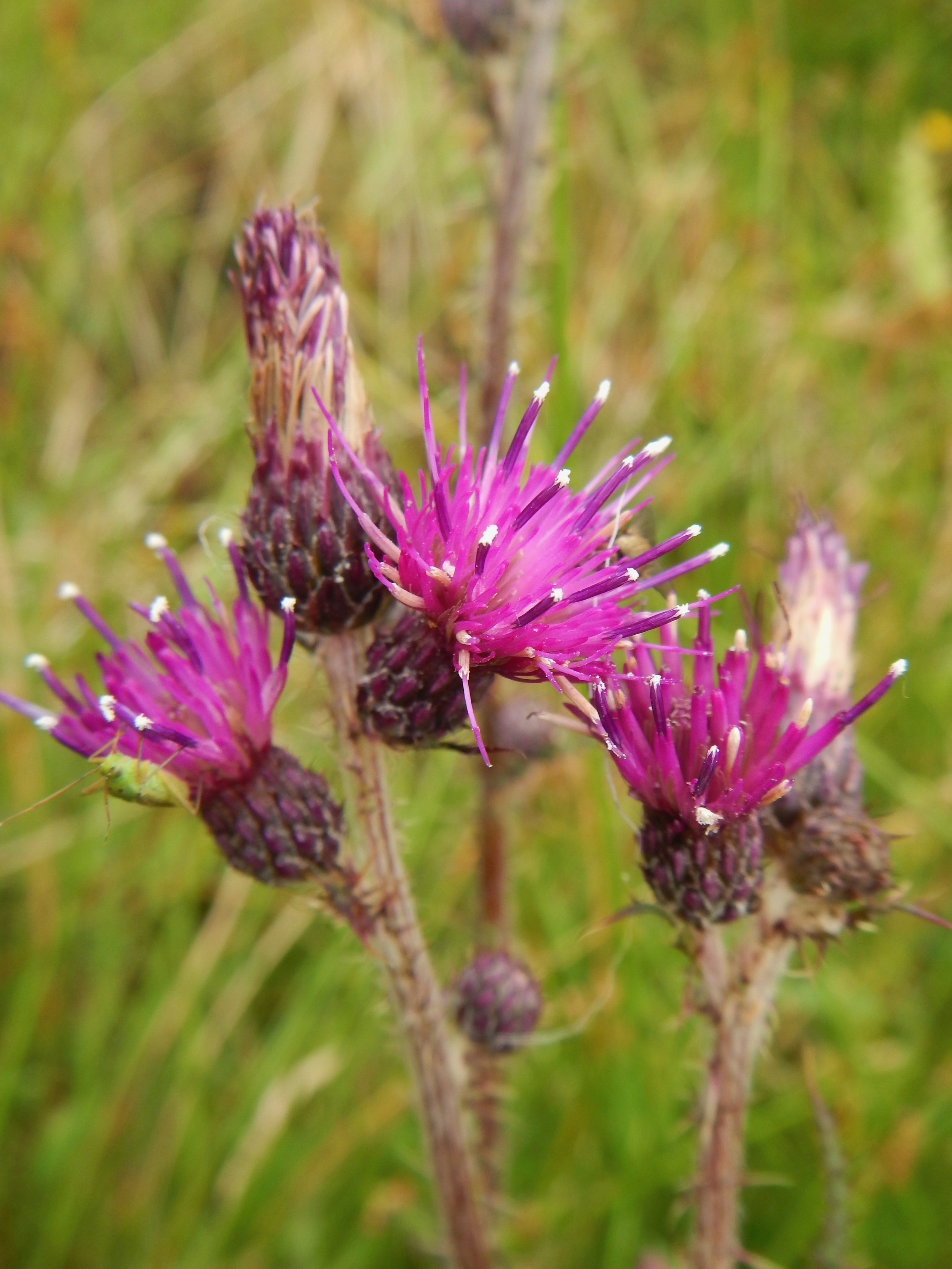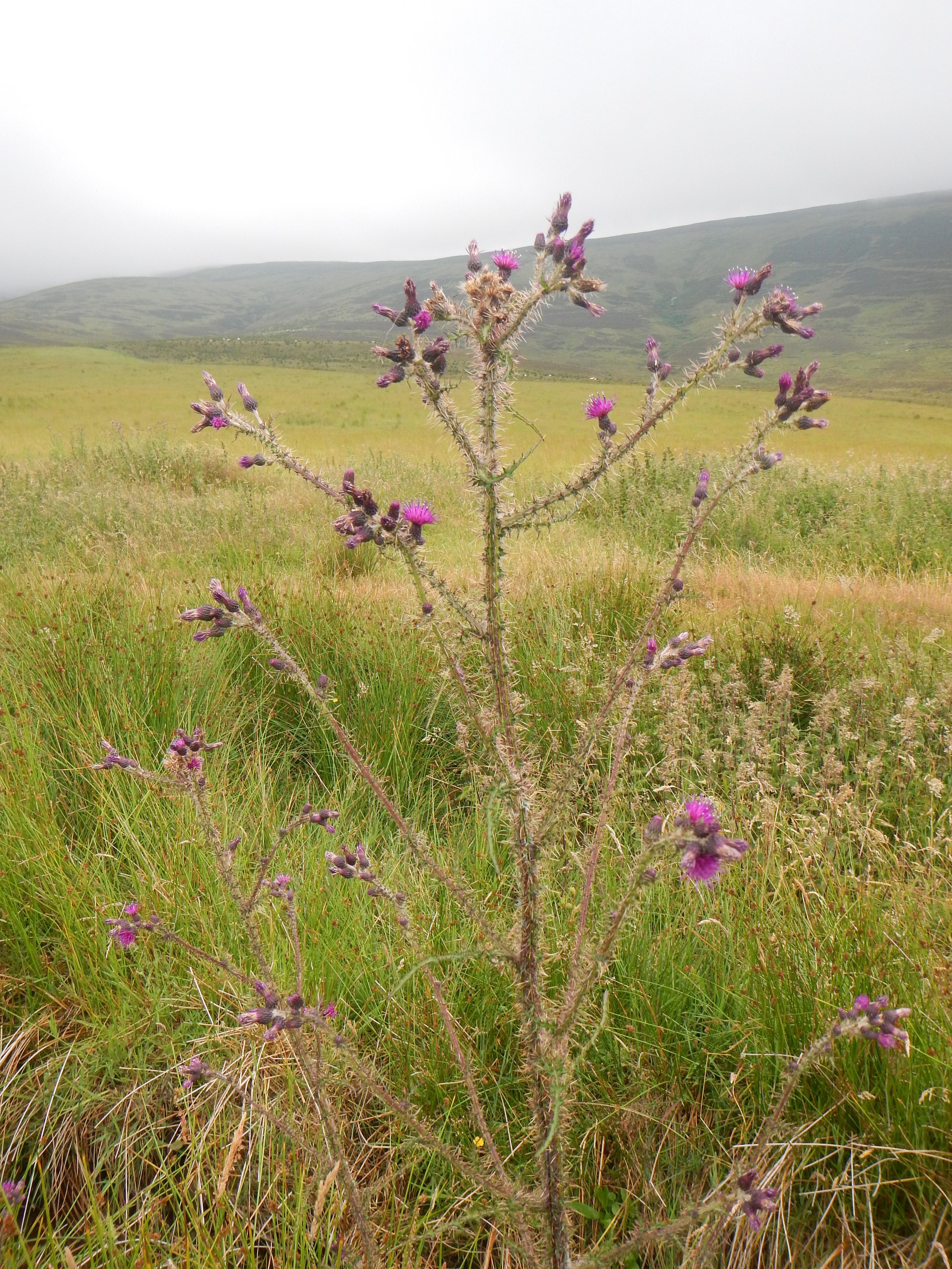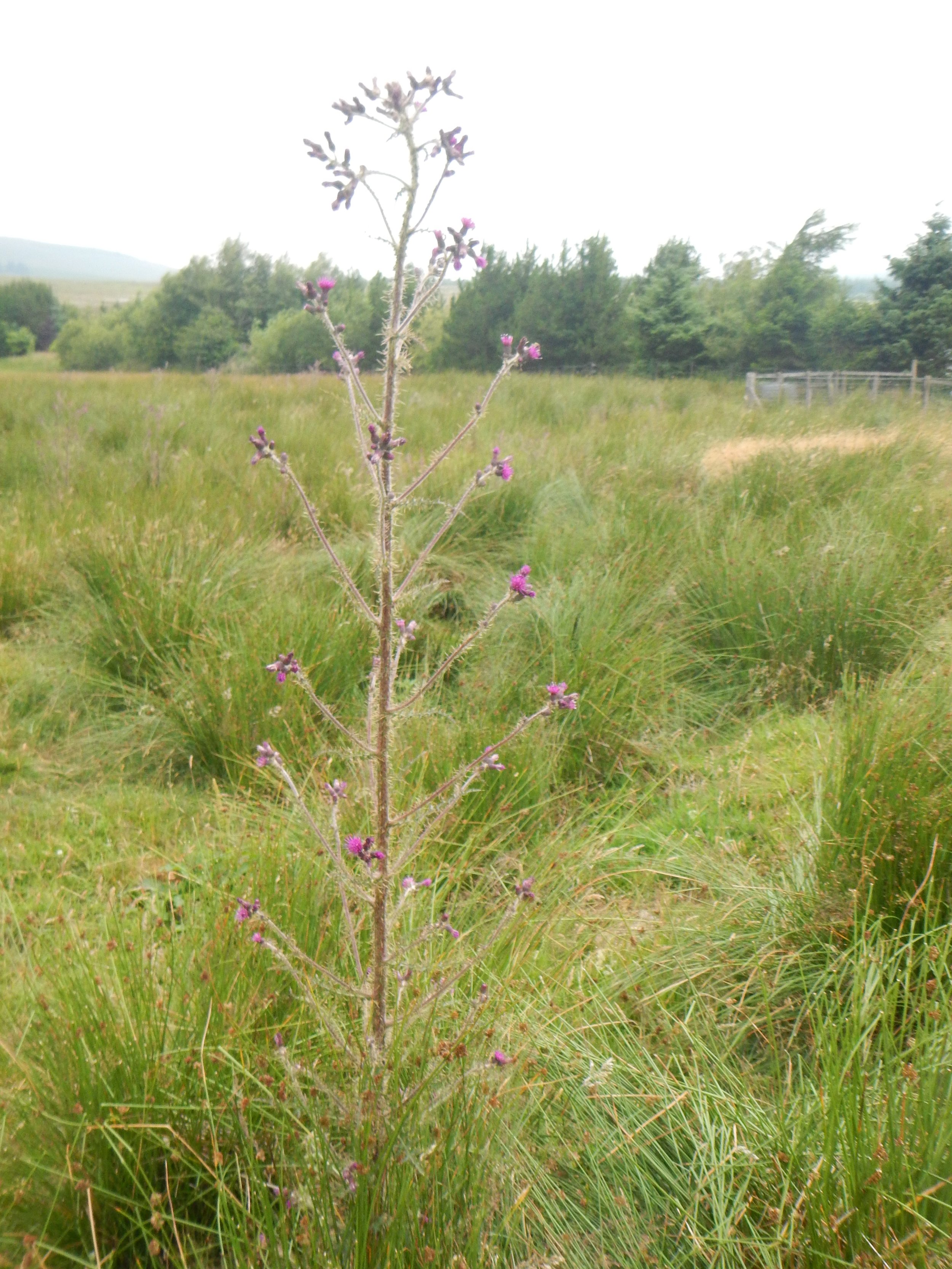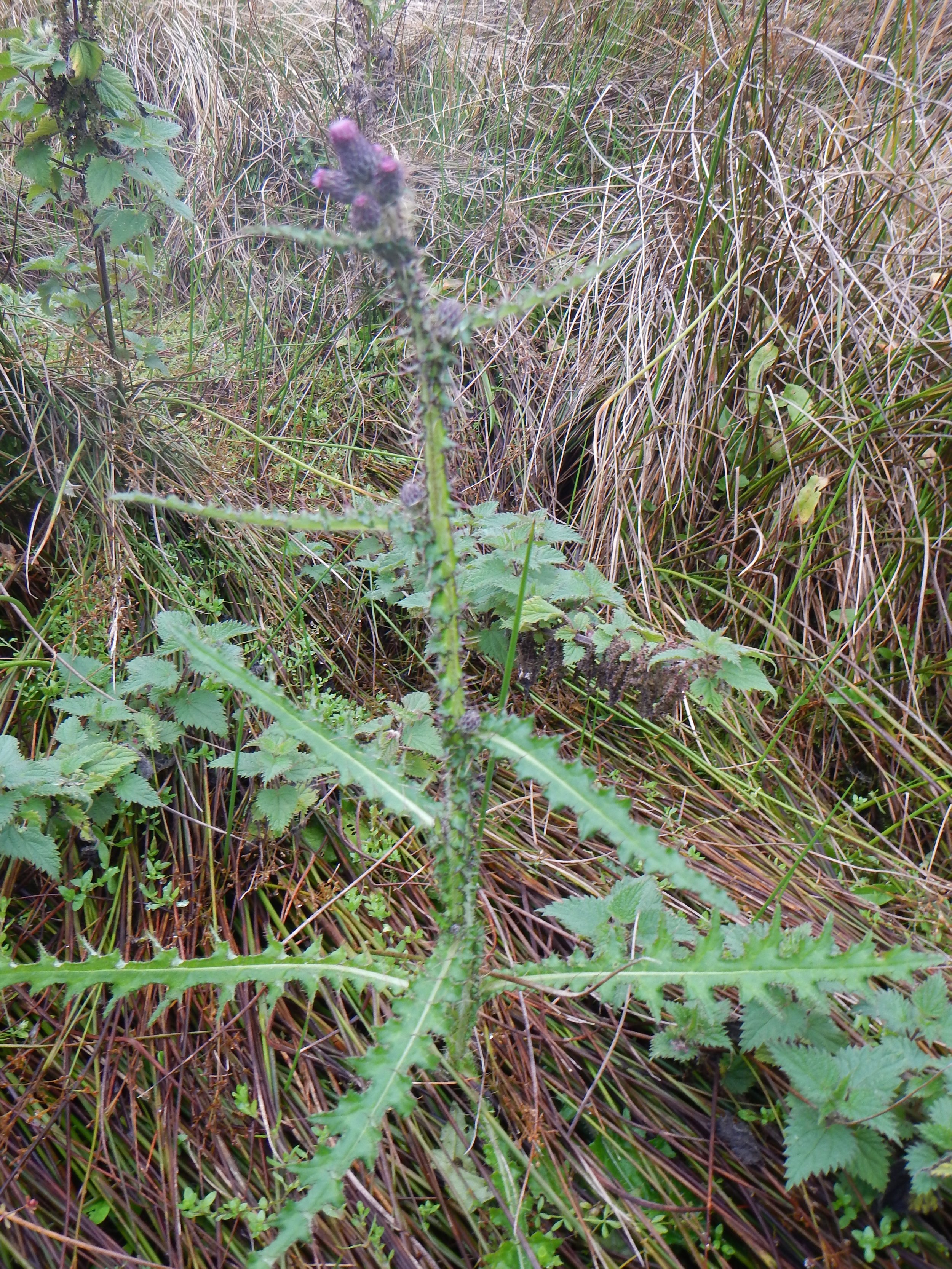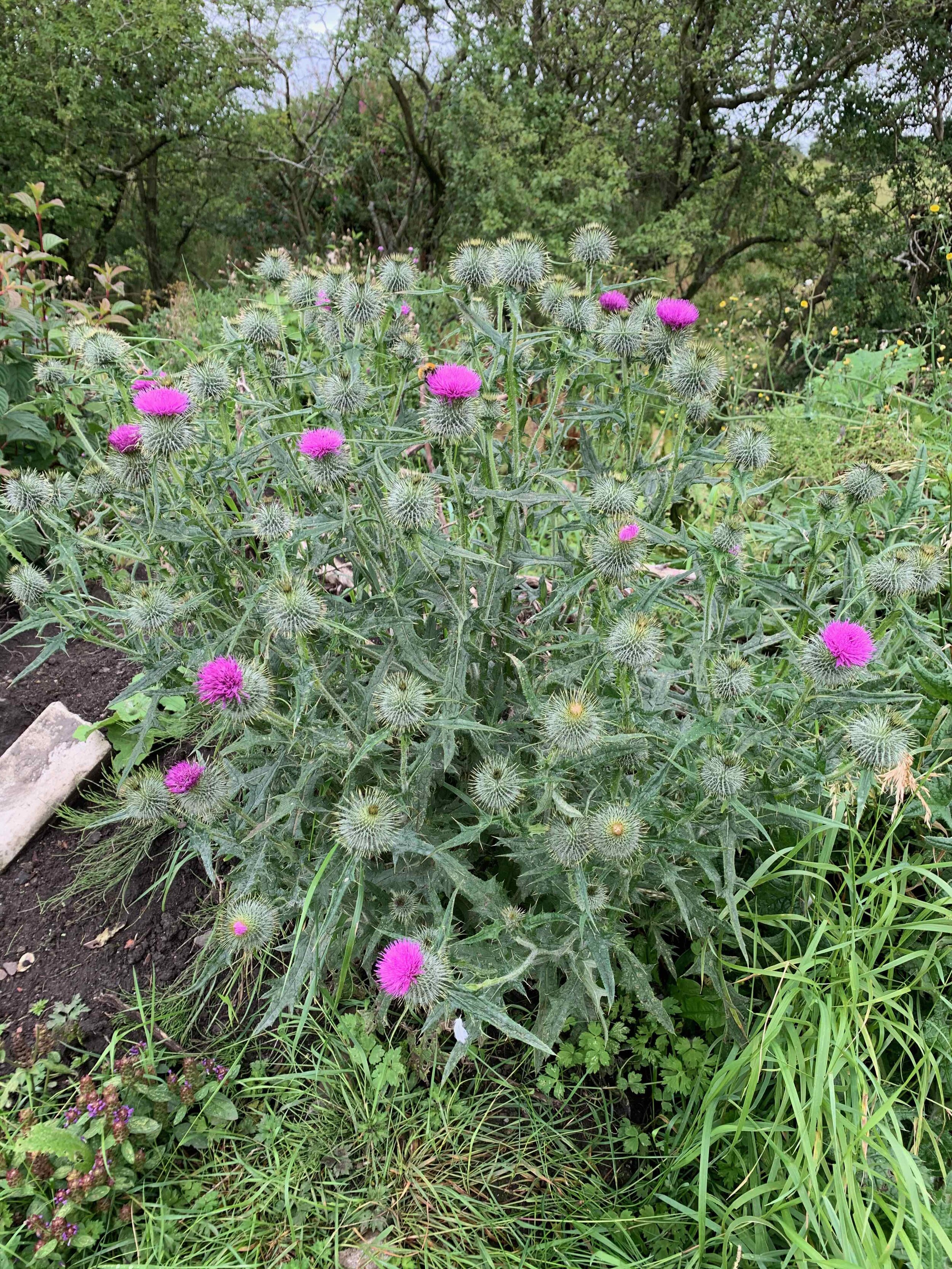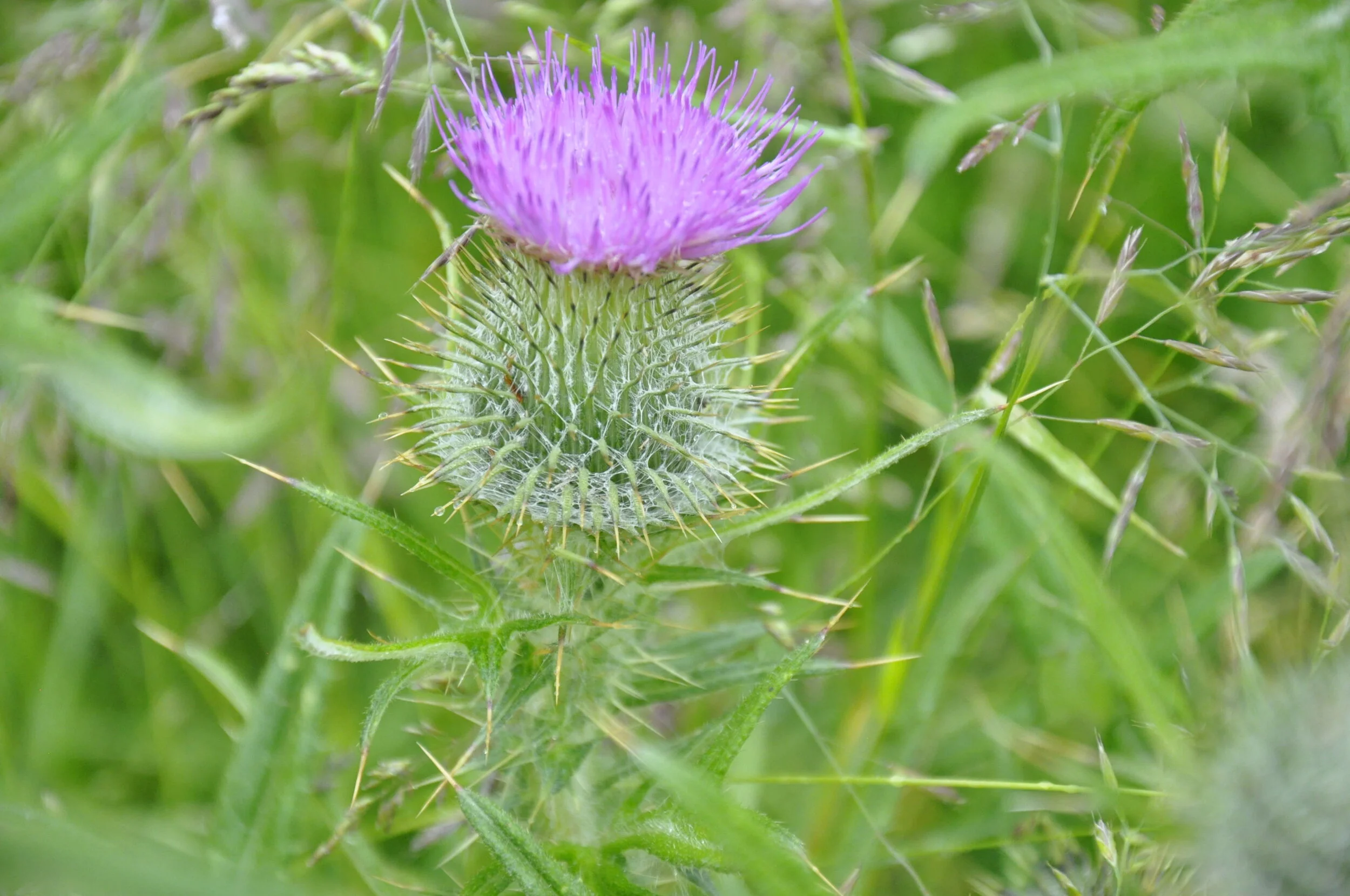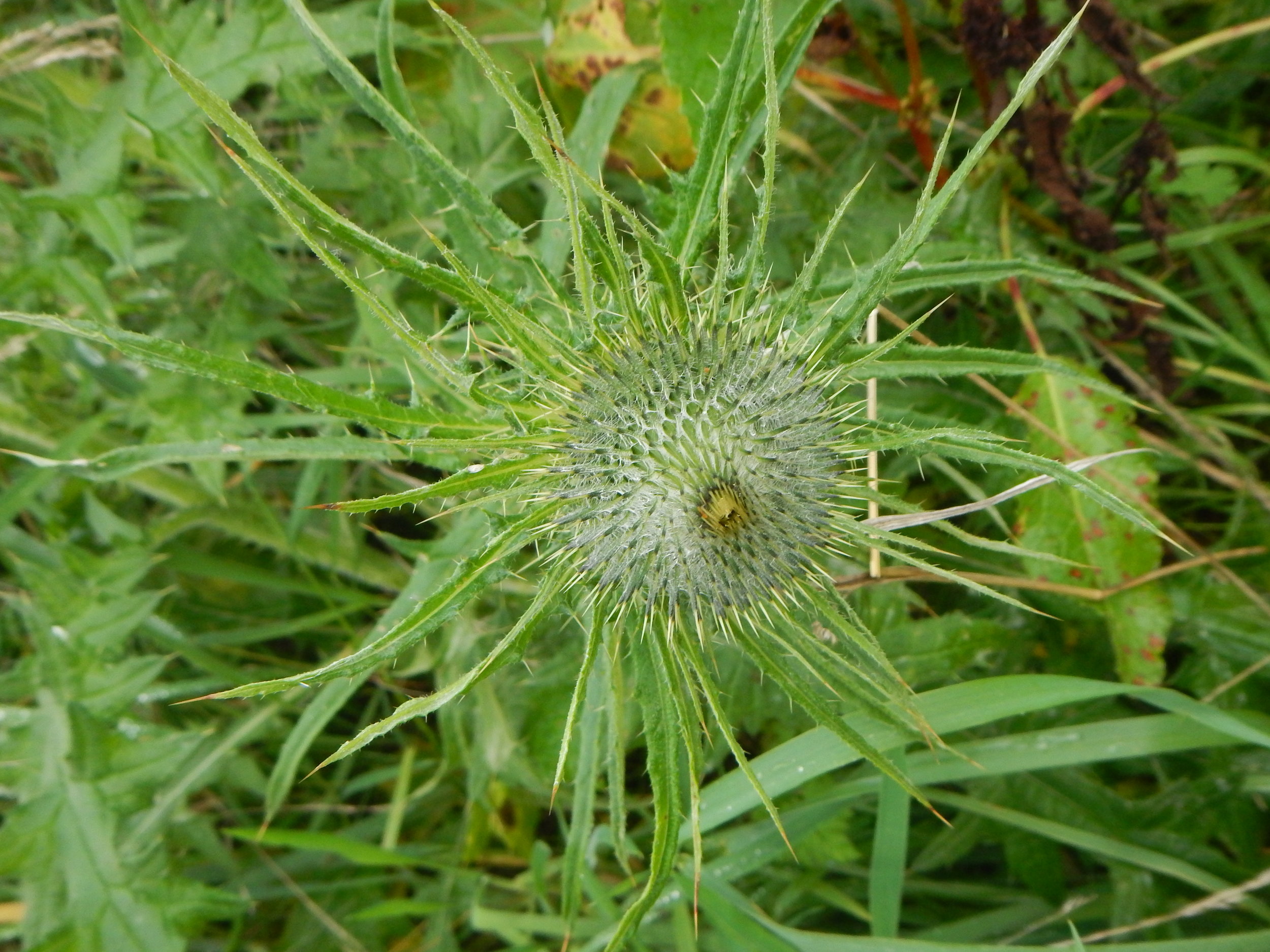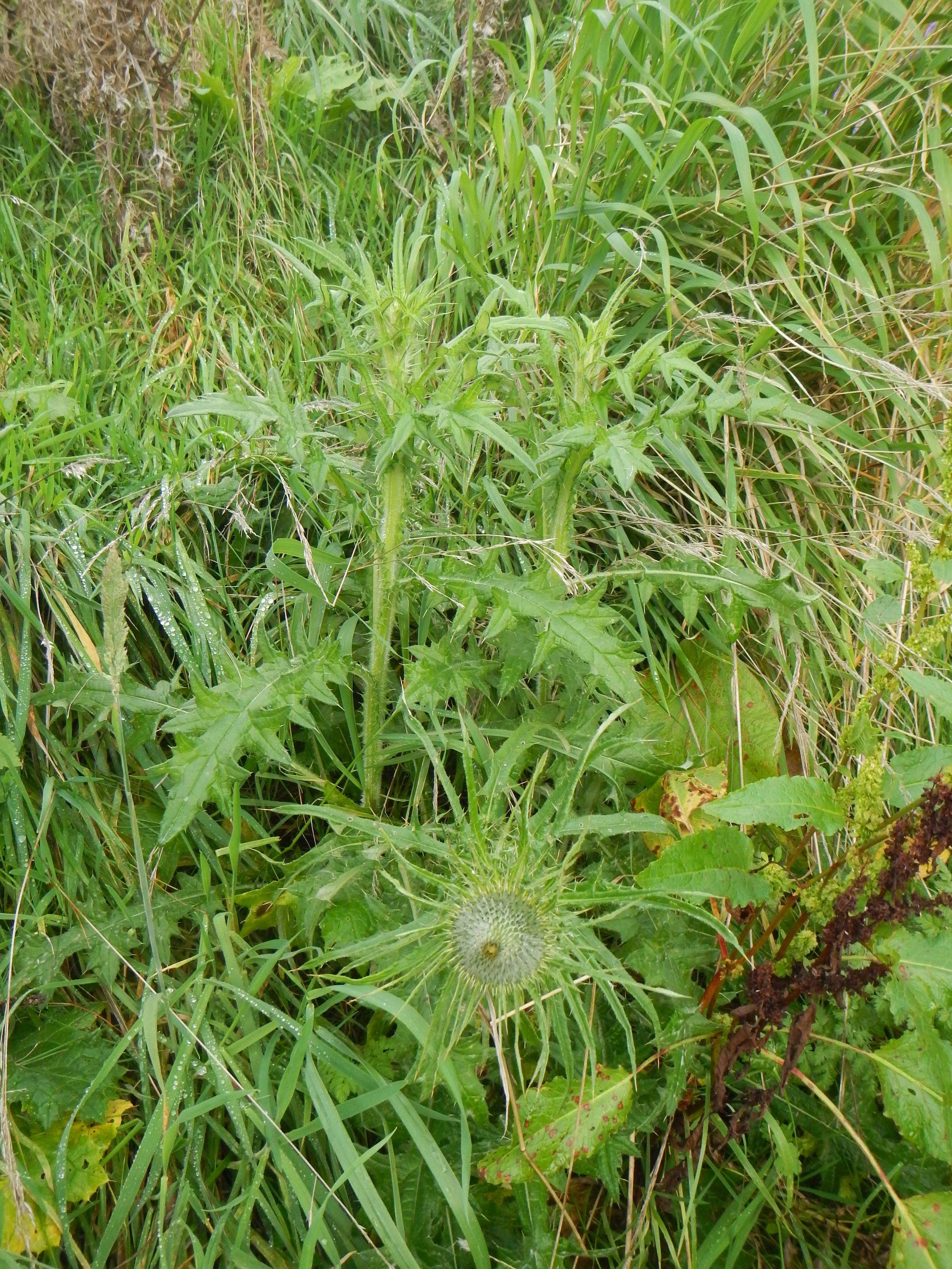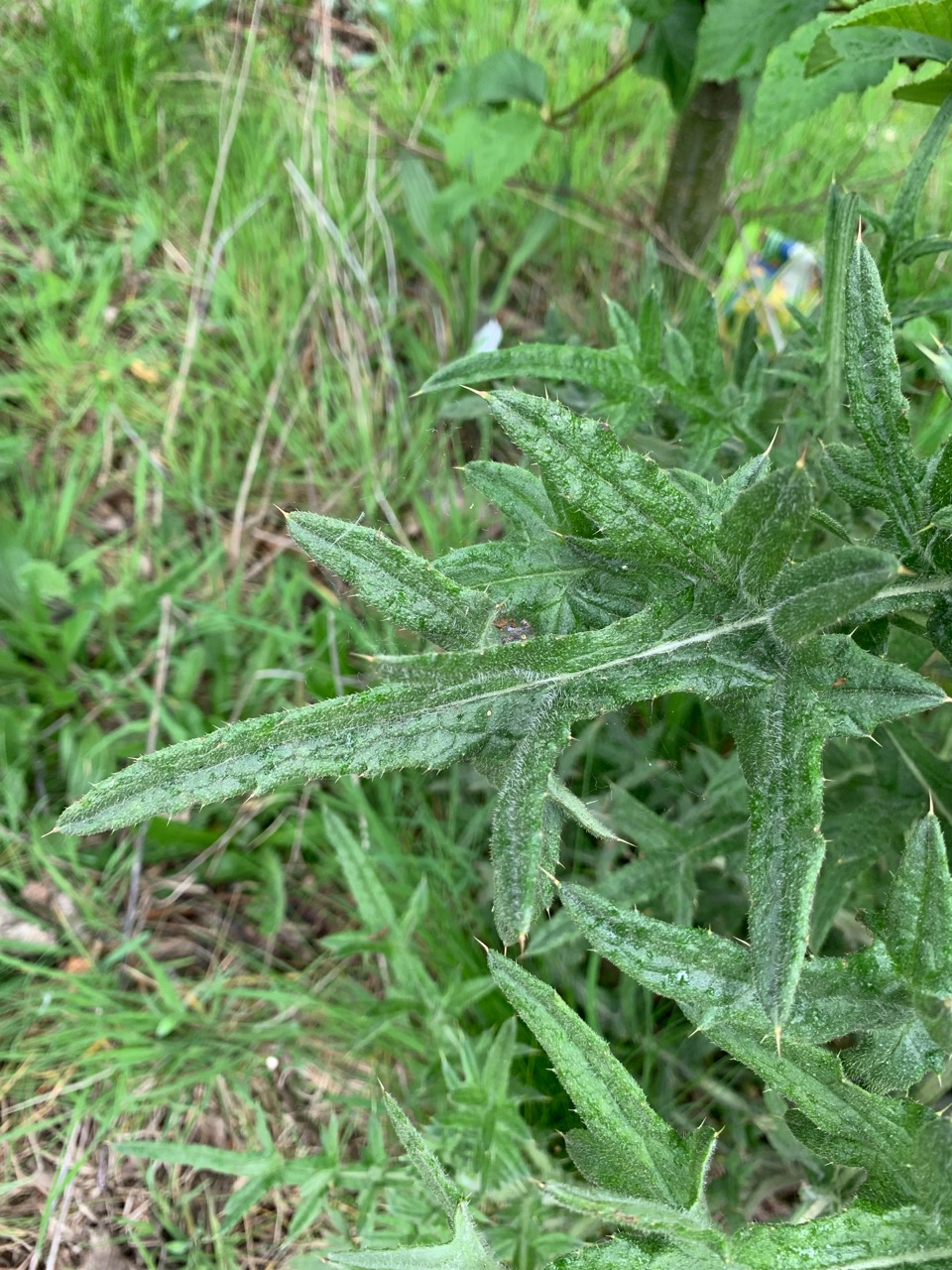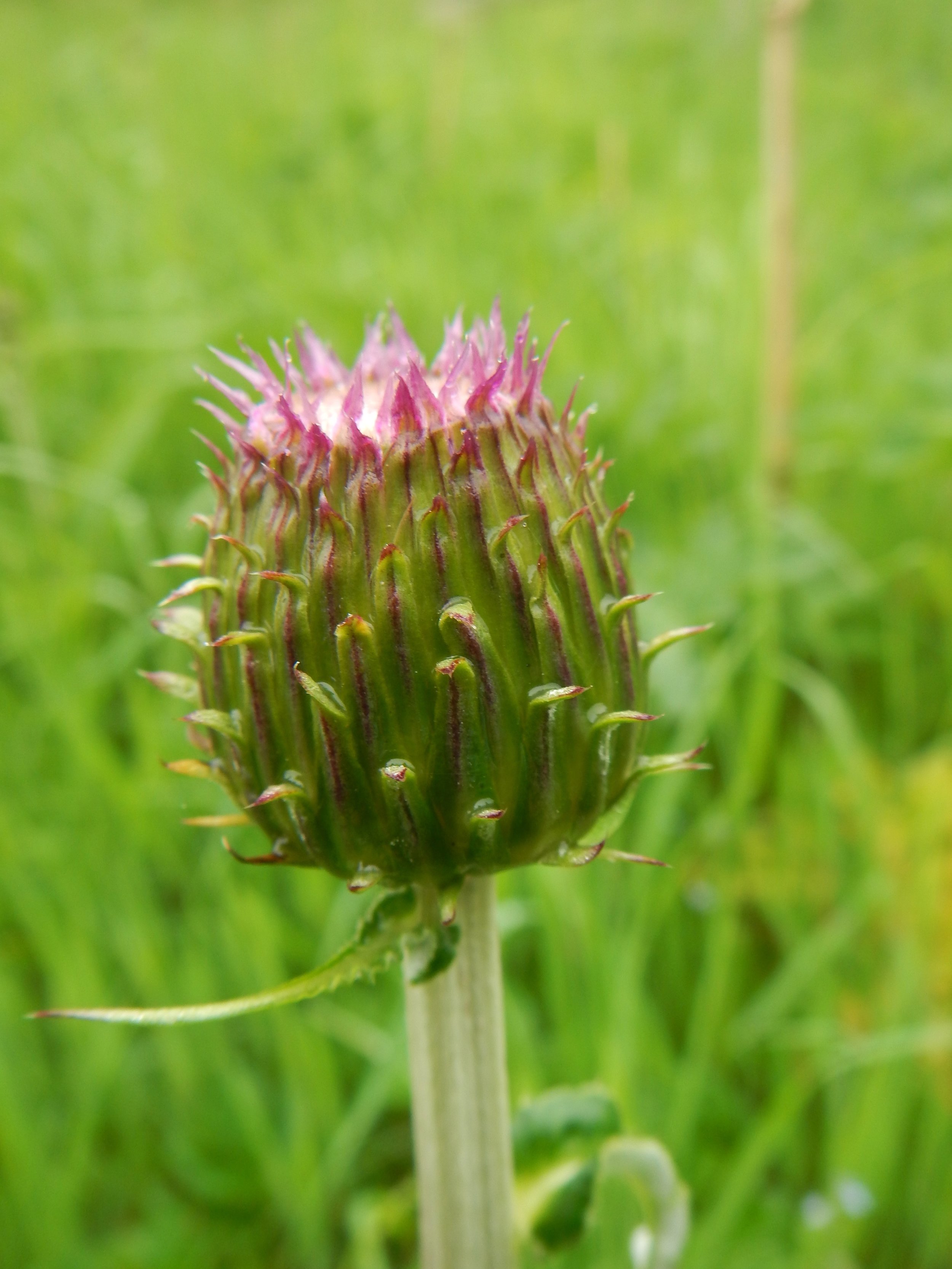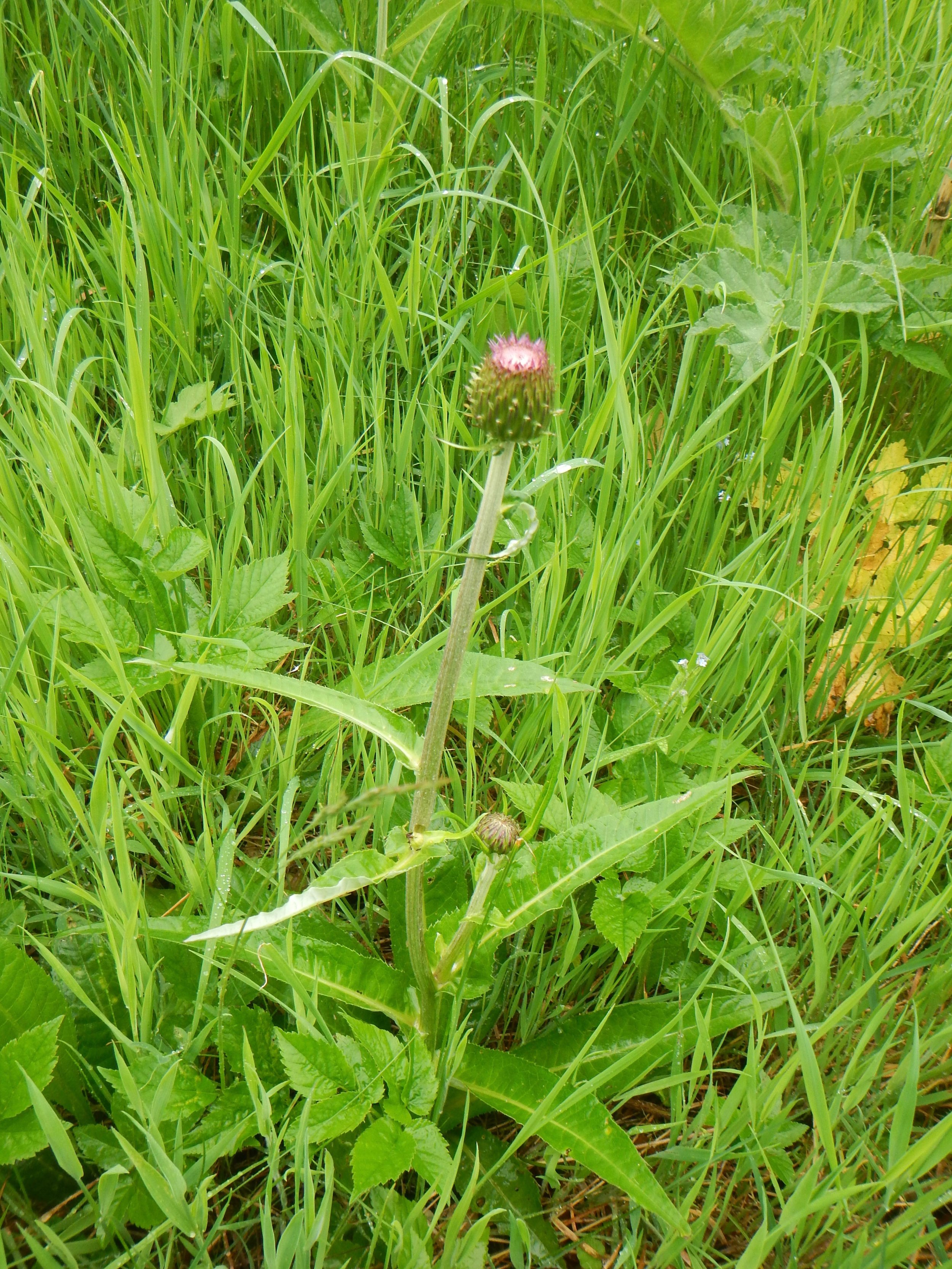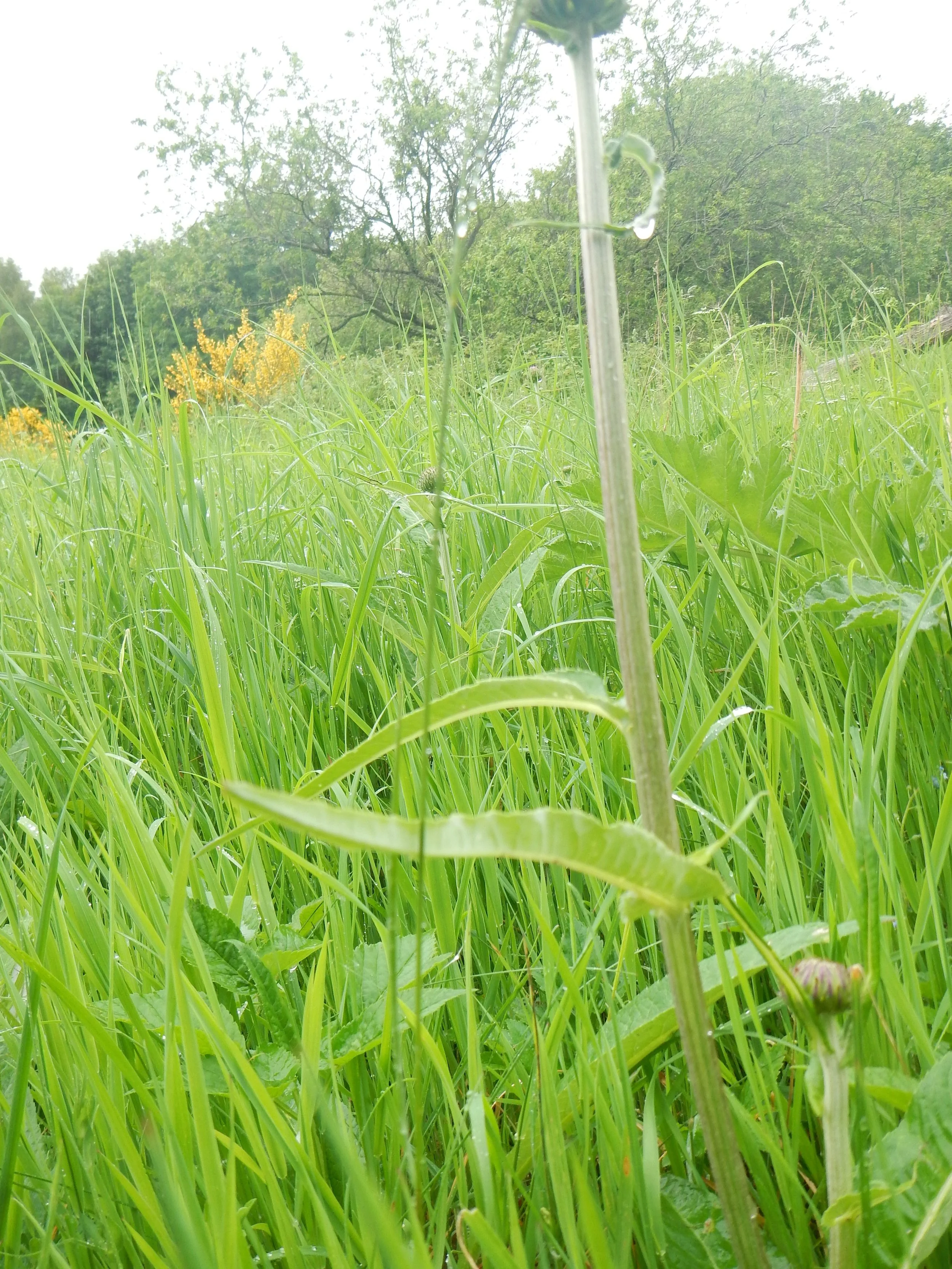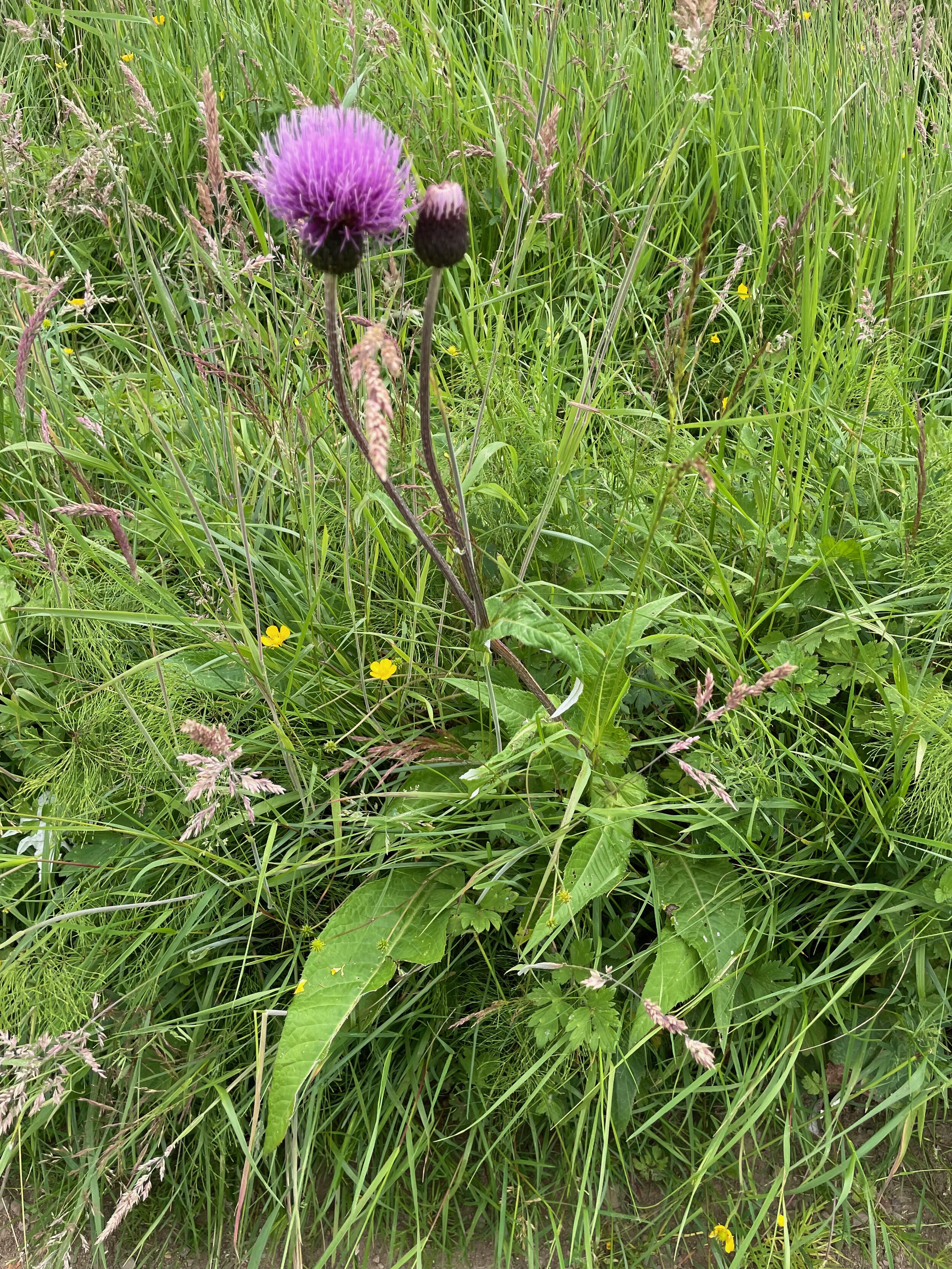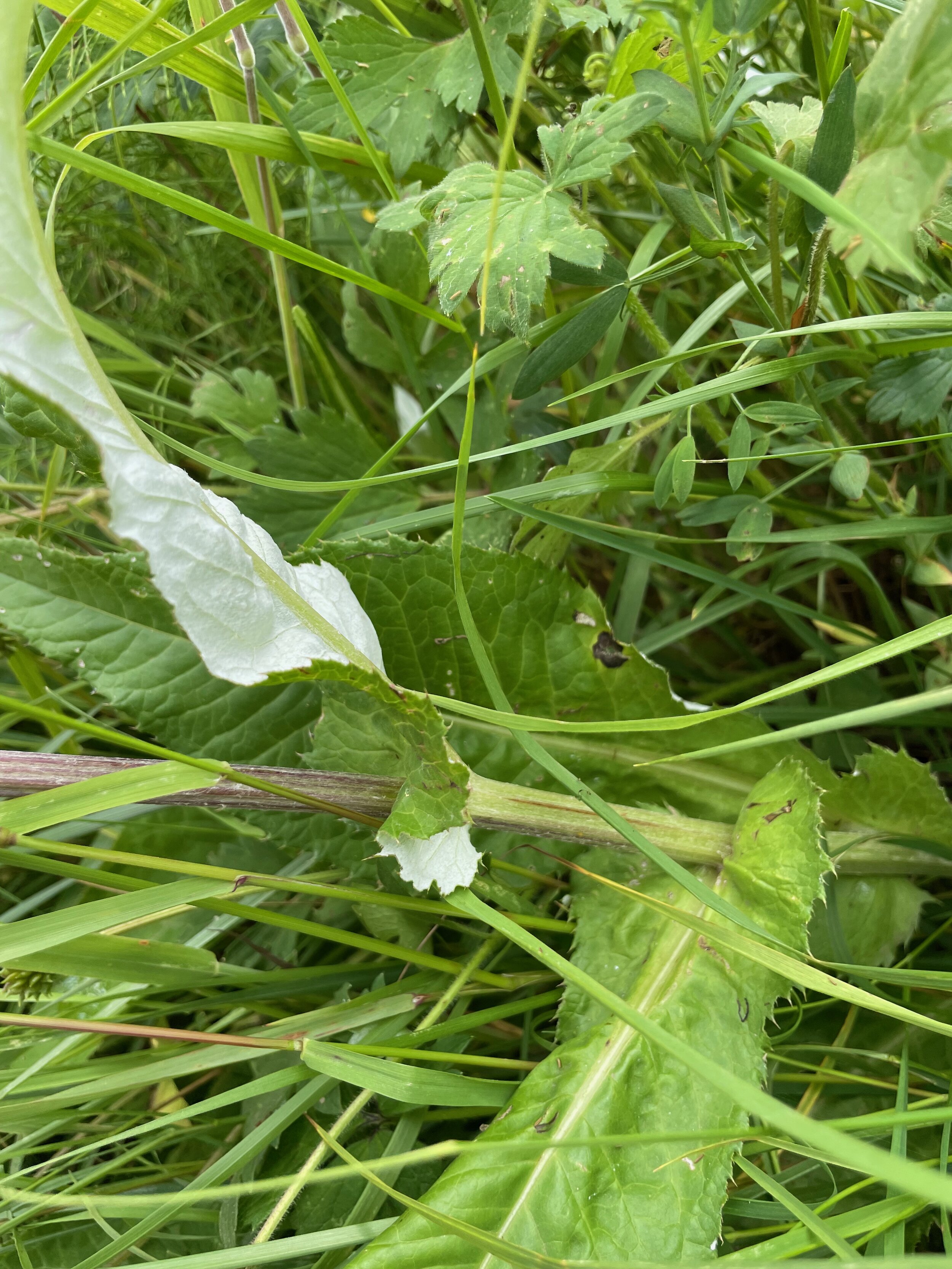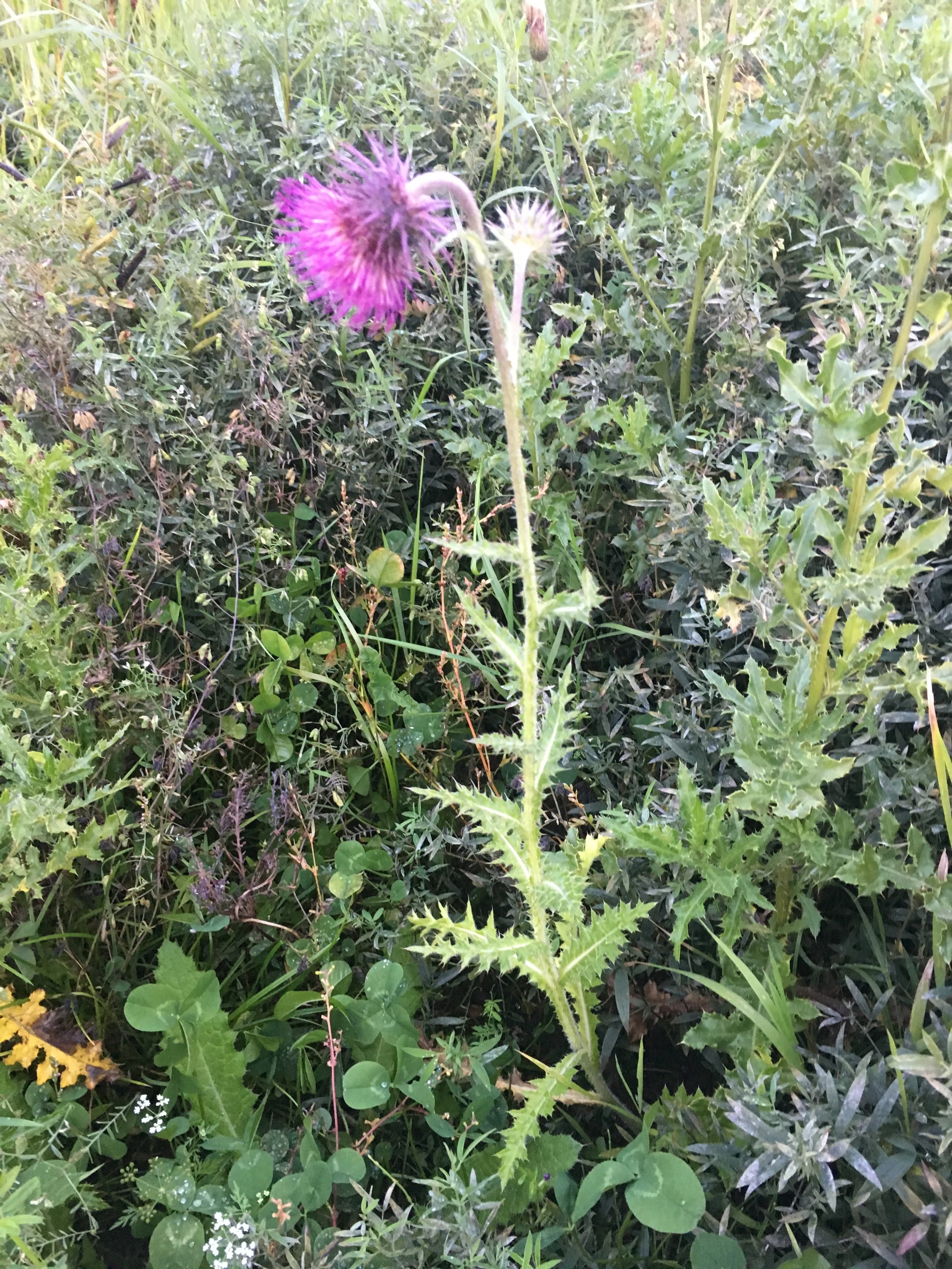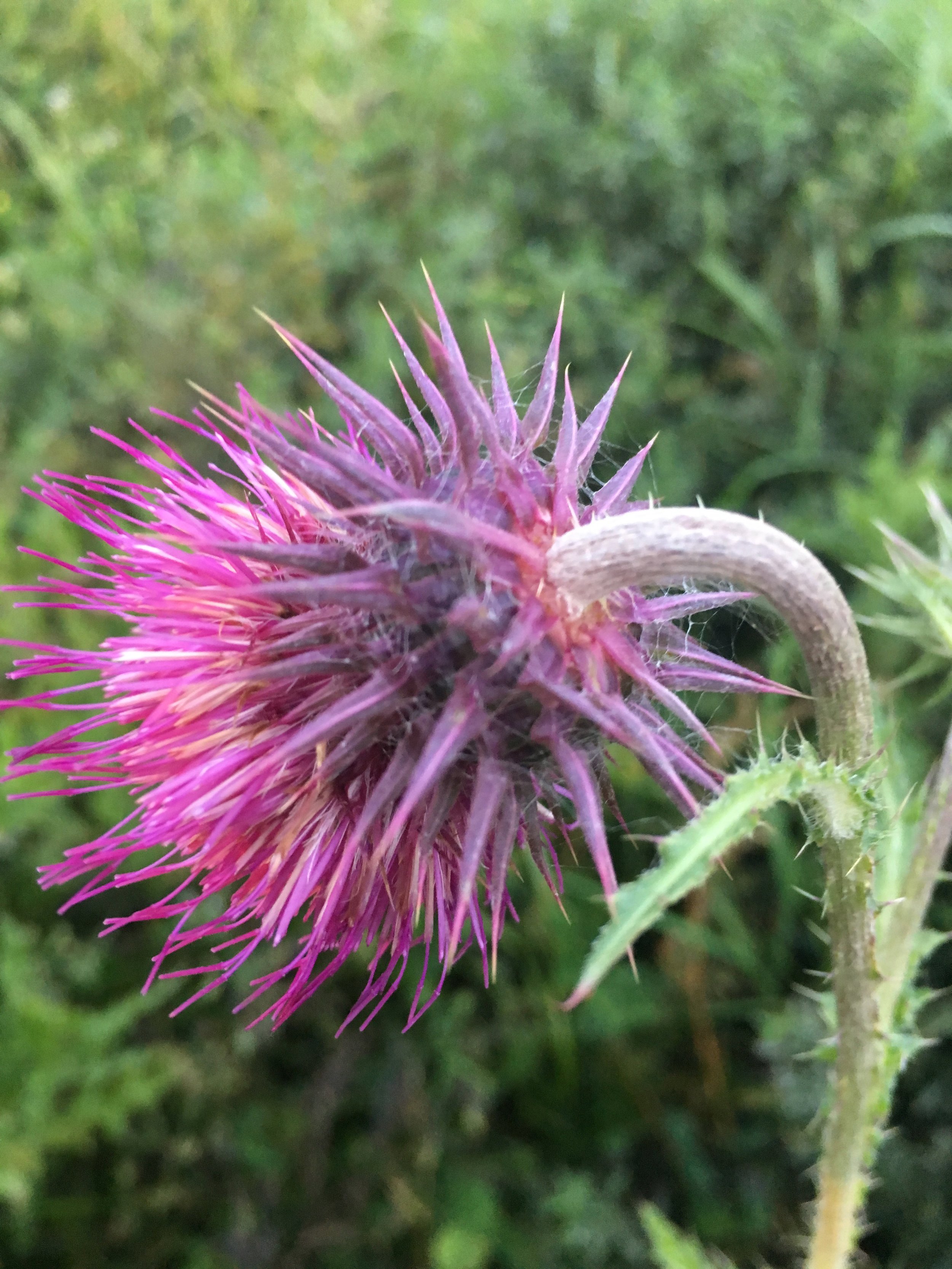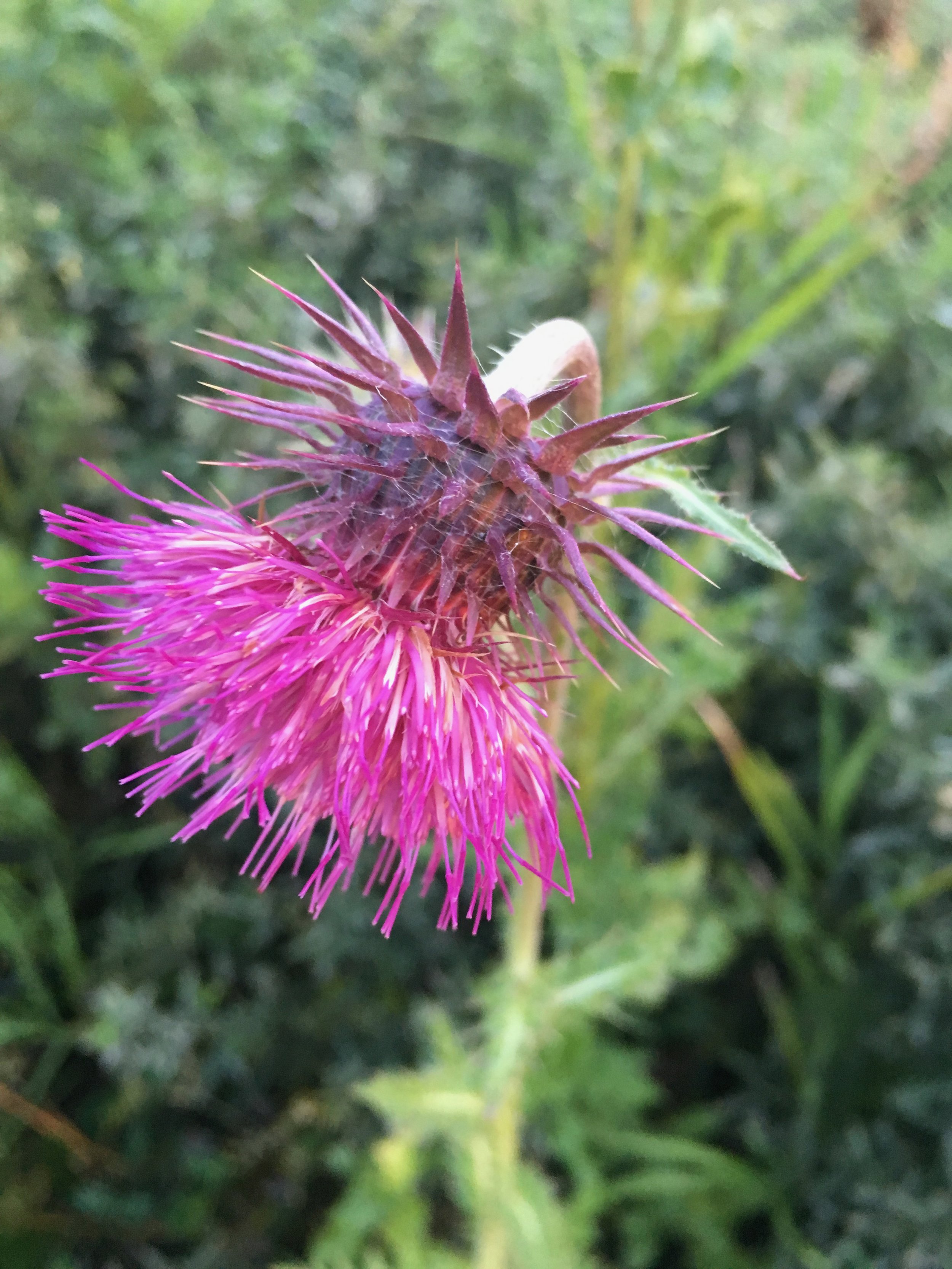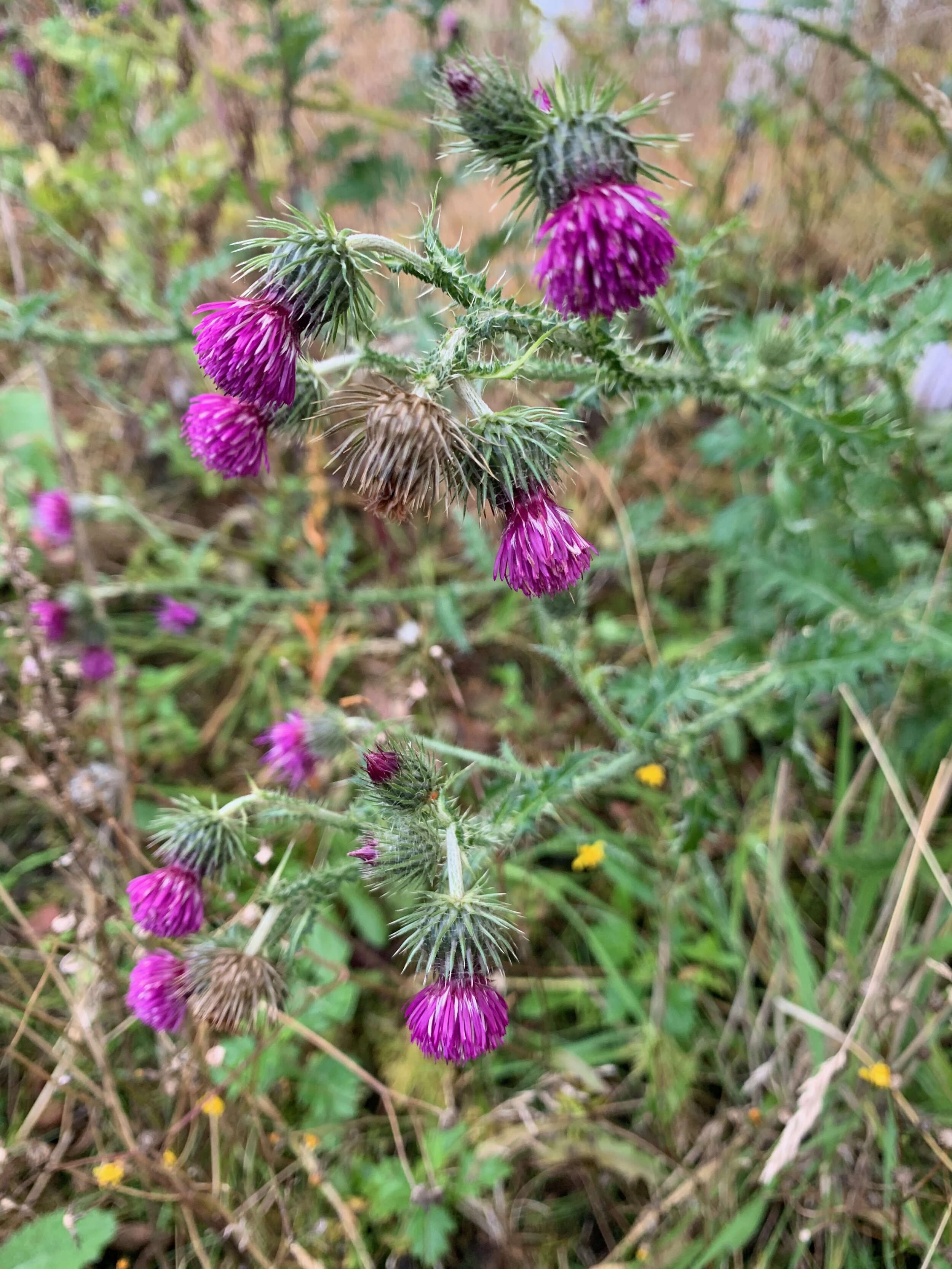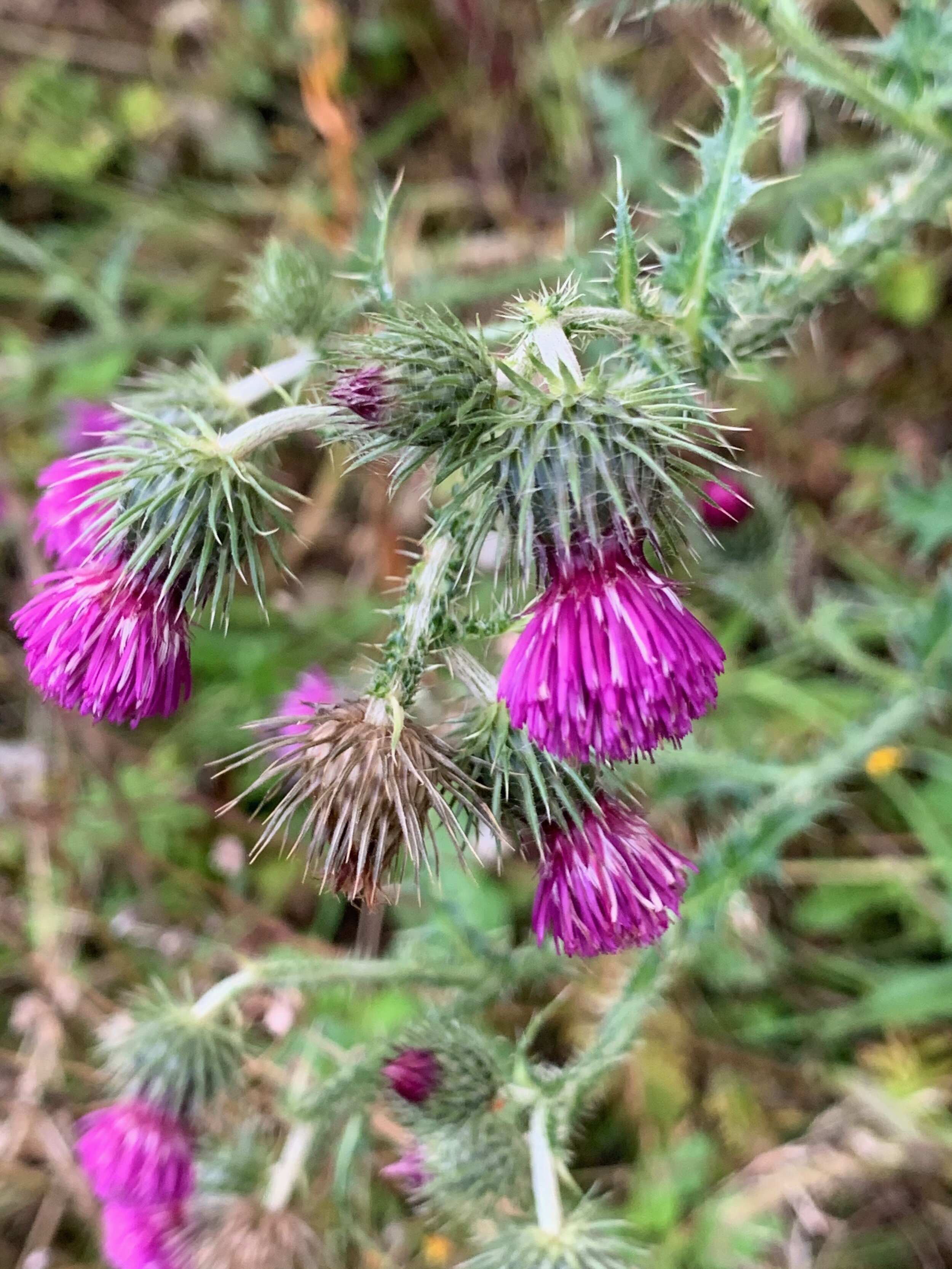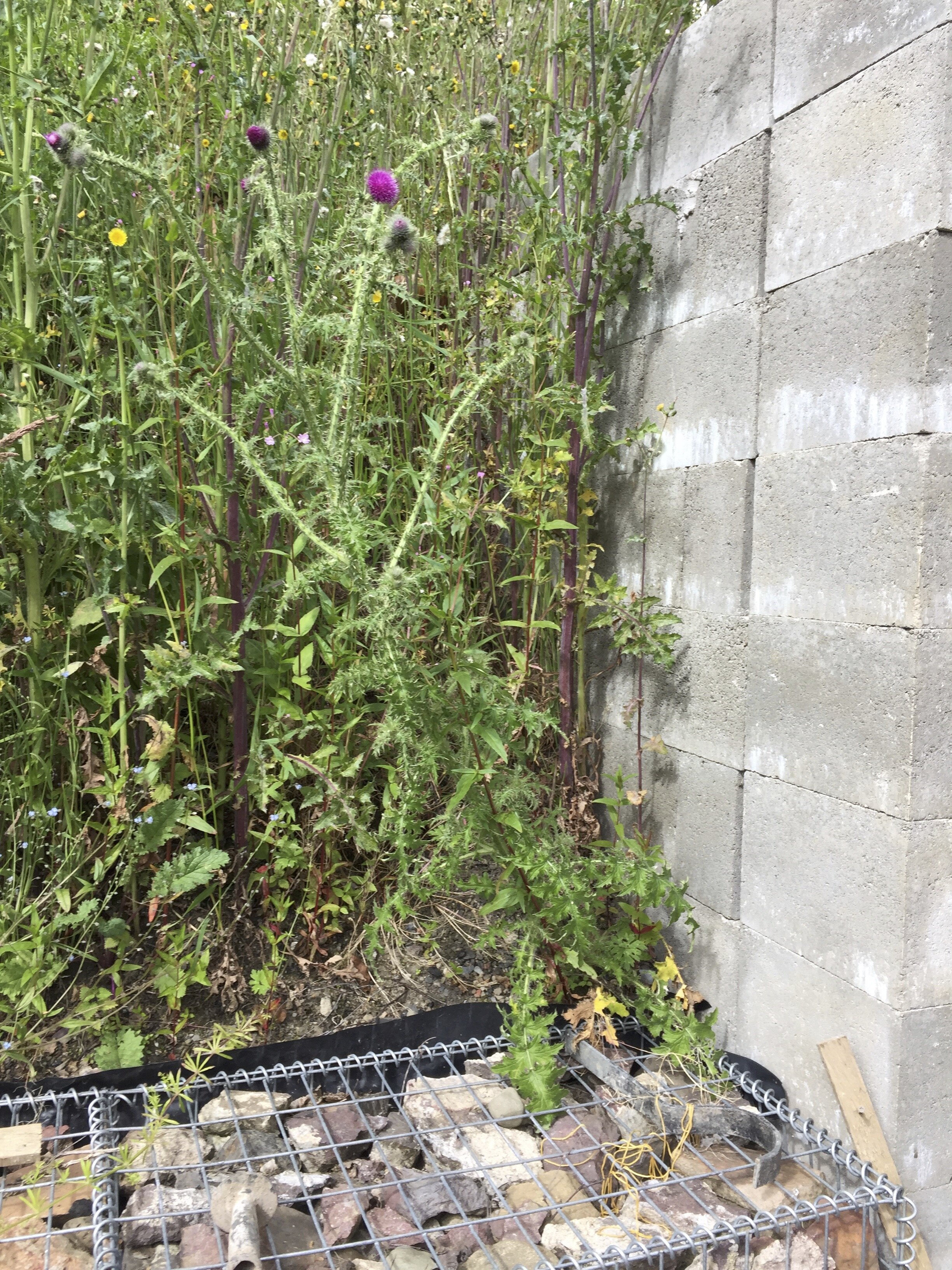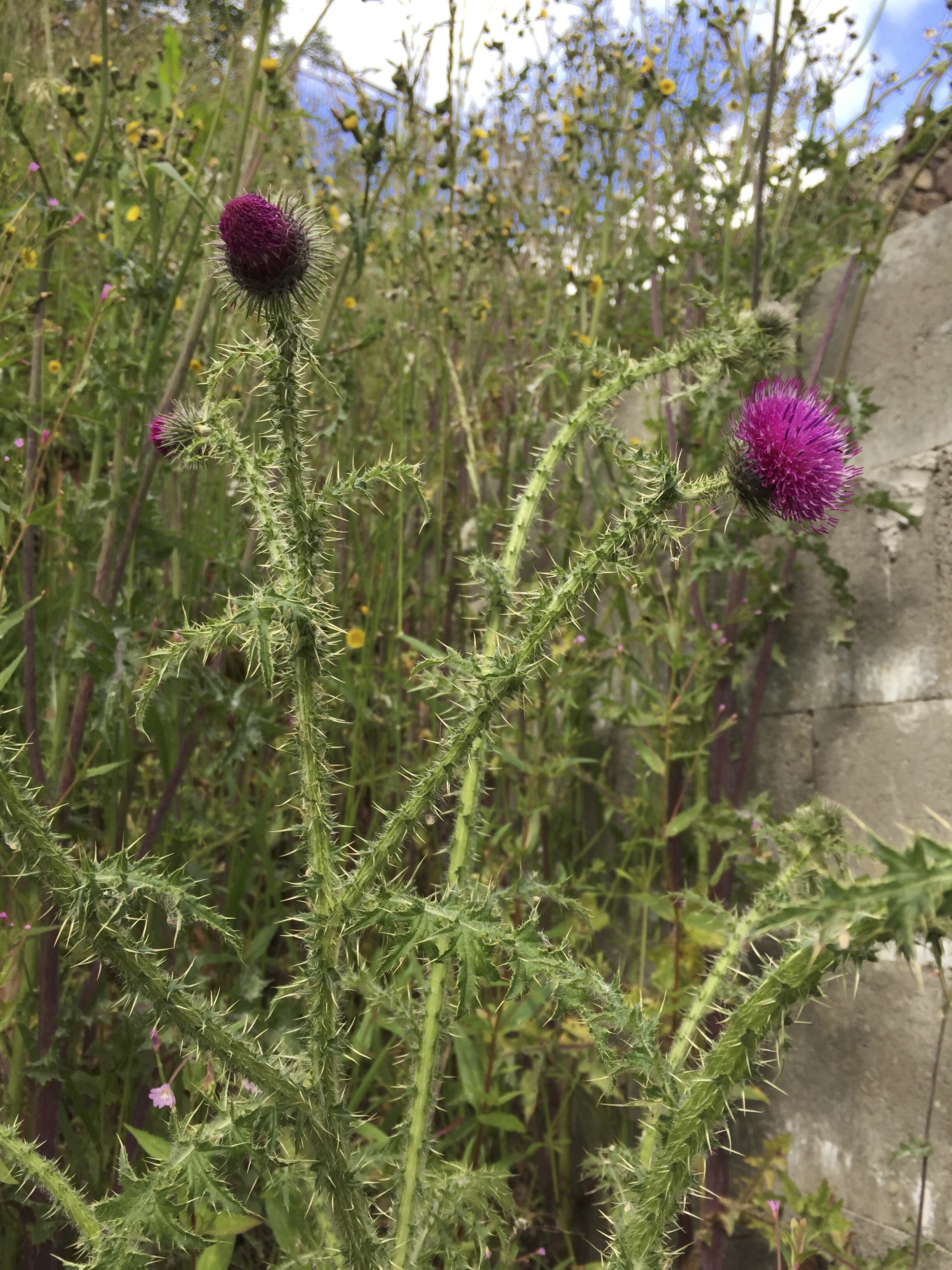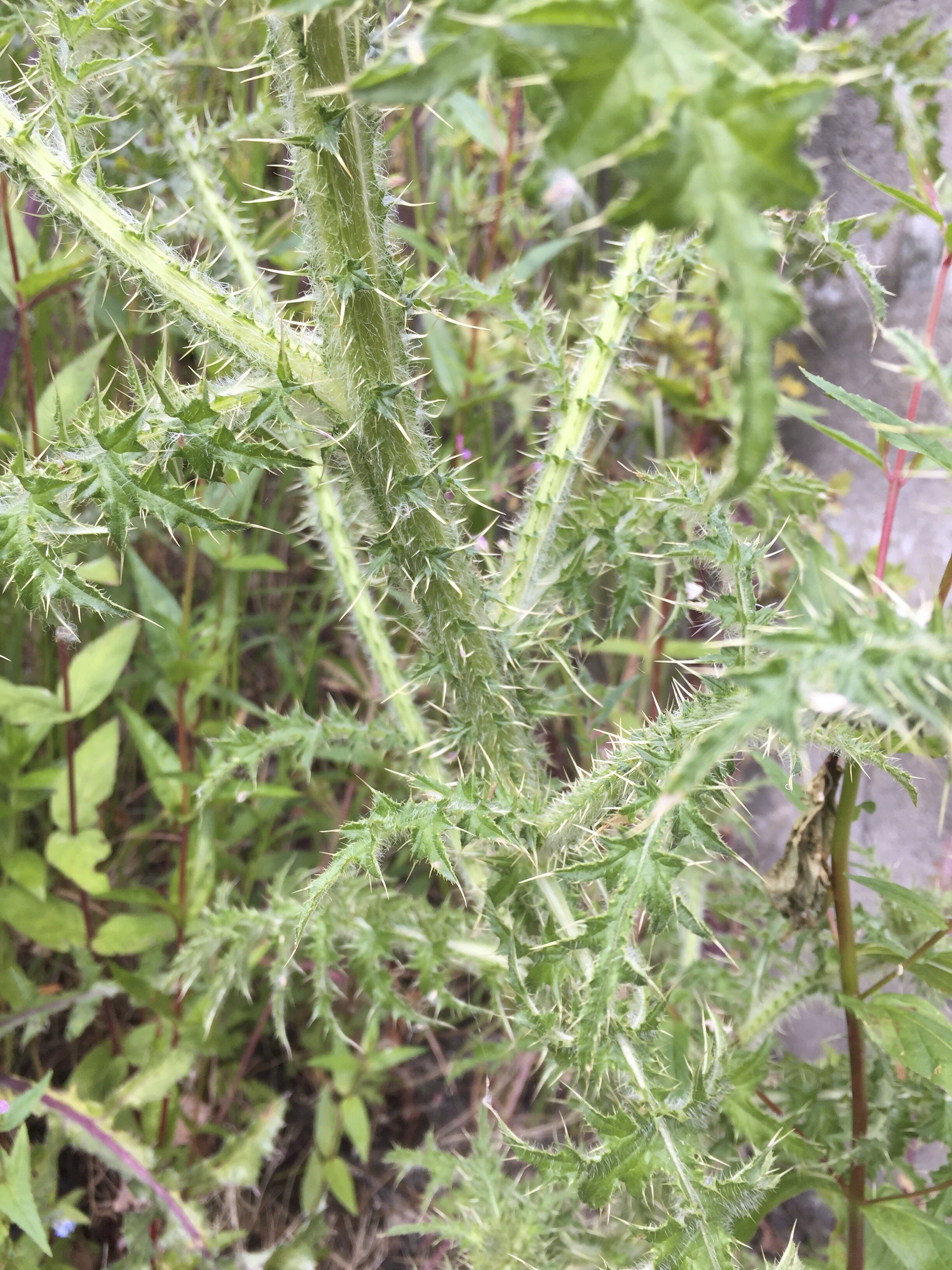Cirsium and Carduus species - Thistles
Three common species and three more unusual thistles are given on this page.
Things to look out for with thistles are of course, the thorns, but also whether or not the stems are winged, are the wings continuous and the colour and number of the flower heads.
Cirsium arvense - Creeping Thistle
Common on waste ground and fields, spreading by creeping roots. The leaves are very spiny and go all the way up the stem. The stem is wingless and spineless. This doesn’t form a basal rosette.
Cirsium palustre – Marsh Thistle
Tall, thin thistles which are common, usually in wet ground. The stem is winged all the way to the top and very spiny. The leaves are slender, lobed with many spines. There are usually several closely clustered flower heads. The bracts are usually purplish and whole plant can be dark or purplish. It forms basal rosettes which are dark purple.
Cirsium vulgare - Spear Thistle
This is the archetypal Scottish Thistle. It is widespread and common especially in farmland and urban areas.
Stem has interrupted spiny wings. Leaves end in a long sharp spine as do all the lobes and there are spines on upper surface of the leaves as well as edges.
Cirsium heterophyllum - Melancholy Thistle
This is an uncommon plant and is found in damp meadows. Stems unwinged and without spines. Base leaves long-stalked, but the upper stem leaves are stalkless and surround the stem with large basal lobes (auricles). The leaves edged with soft spines and are white beneath. Flower-head is large.
Carduus nutans - Musk Thistle
A spiny winged stem whose spines also stop below the solitary flower head. The stem is also covered in white hairs.
Carduus crispus - Welted Thistle
This is a tall branched large thistle with a spiny winged stem which also stops just below the flower-head.

